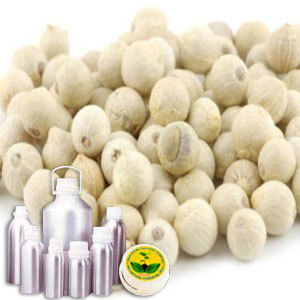Botonical Name | : | Piper nigrum | |
CAS # | : | 8006-82-4 | |
Country of Origin | : | India | |
Color & Odor | : | Pale yellow transparent liquid with warm and spicy, characteristic white pepper odor | |
Solubility | : | Soluble in alcohol and oils, Insoluble in water | |
Specific Gravity | : | 0.913 – 0.9205 @ 25°C | |
Optical Rotation | : | -6 to -33° | |
Refractive Index | : | 1.486-1.495 @ 25°C | |
Flash Point | : | >100°C | |
Plant Part Used | : | White Peppercorns | |
Extraction Method | : | Steam Distillation |
DESCRIPTION:
White pepper has a milder, more delicate flavor than black pepper, and is useful for adding a peppery flavor to light-colored sauces and soup without adding black color. White pepper is popular in European cuisines.CONSTITUENTS:
White pepper contains slightly less essential oil than black pepper. The aroma of both black and white pepepr is due to the 80% content of monoterpenes: sabinene, beta-pinene, limonene, furthermore terpinene, alpha-pinene, myrcene, delta-3-carene and monoterpene derivatives (borneol, carvone, carvacrol, 1,8-cineol, linalool). Sesquiterpenes make up about 20% of the essential oil: beta- caryophyllene , humulene, beta-bisabolone and caryophyllene ketone.AROMATIC SUMMARY / NOTE / STRENGTH OF AROMA:
A middle note with a medium aroma, sharp, spicy scent faintly reminiscent of Clove.BLENDS WITH:
Pepper grinder. Black, white and green peppercorns.COMMON NAMES:
Piper nigrum.USES:
It has been by the Greeks and Romans. It also helps in the prevention of cancer cells. A pain relief agent even stronger than capsaicin.


































